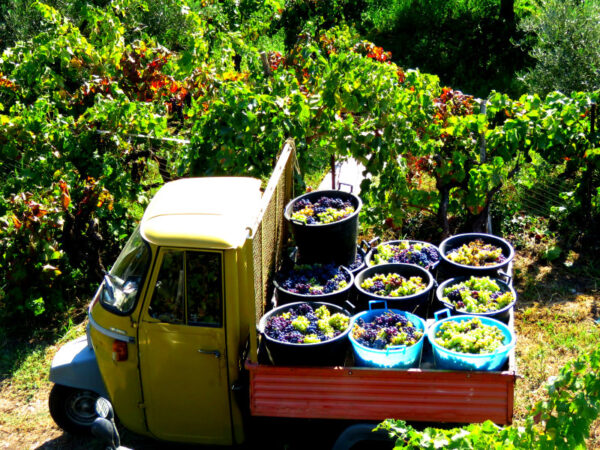You are on Mount Etna during the Christmas period and … what will you do? Maybe a nice trekking on the snow of our magnificent volcano, or you will taste the local delicacies. A territory like Etna offers so much in every season and sometimes even beyond. For Christmas, delicious desserts can be found almost everywhere and, even if a few months late, you may still find the delicious mustard around.
Attention! Sicilian mustard is not… mustard!
In Italy, the term “mostarda” means “burning must” (mustum ardens) and is almost always a sweet dish. The fact that it is “burning” can be explained in two ways: the presence of some spices that give a more intense flavor to the must or the fact that hot ash was used to remove the acid from the basic must.
Certainly Italian mustard has nothing to do with American mustard, directly derived from the English and French culinary tradition (moutarde, mustard) which instead sees it much spicier and suitable for savoury foods. Sicilian mustard is therefore not the one that is spread on the sandwich together with ketchup!
History of mustard
Cooking the must is a practice that has always existed in Italy. The Romans knew it, people also used it in the early Middle Ages… when it took on spicier characteristics. In northern Italy, mustard spread in the 17th century, between Cremona and Vicenza. In the south it arrived a little later and immediately took on a different characteristic, much sweeter and more delicate. In particular in Sicily, mustard is prepared by reducing the grapes’ must by boiling; then, after it has cooled, starch or flour is added. Cook again over medium heat, stirring often. It is then poured into the molds and you shall wait for it to cool. You can also add dried fruit, raisins and spices (cloves, cinnamon) or a touch of icing sugar.
Mustard varieties
Sicilian mustard is traditionally a grape must mustard, in fact you commonly find it around in autumn, after the harvest. The months of October and November are the ideal ones to taste it. But if well preserved you can also enjoy it at Christmas. Alternatively, today they produce prickly pear mustards, variations that are becoming increasingly popular in the tradition.
 GRAPE HARVEST photo by G Musumeci
GRAPE HARVEST photo by G Musumeci
Where to taste Etna mustard?
Etna mustard can be found almost everywhere, because immense expanses of vineyards arise all around the volcano. However, some towns have a more deep-rooted tradition than others.
Belpasso is “the capital” of Etna mustard. The lovely little town located on the southern side of the volcano, already home to excellent nougats and delicious icy granita, boasts a tradition of grape mustards among the oldest in Sicily. A nice tour of Etna mustard will take you from Belpasso to Militello Val Catania, another town that enhances the professionalism of its pastry chefs in producing this dessert. Both in Militello and Belpasso it is very easy to find prickly pear mustard, given the intensive cultivation of these plants in the area.
And certainly the town of Linguaglossa, as you go back to Etna Nord, is the home to mustard. It is renowned for its high quality wines and for all products derived from grapes in general, as well as for the beautiful and colorful murals.
A sweet Christmas at the foot of the volcano
So treat yourself to a sweet Christmas at the foot of the volcano. Alternate guided tours, adventurous trekking, snowshoeing with tastings and relaxing festivals. The typical desserts of the period are cudduredde (a donut-shaped almond paste seasoned with sprinkles and honey), almond pastries and obviously cannoli. If you find mustards, add them to the list. And enjoy an extraordinary experience.
For the opening photo above the title, thanks to blog Scorzette.com